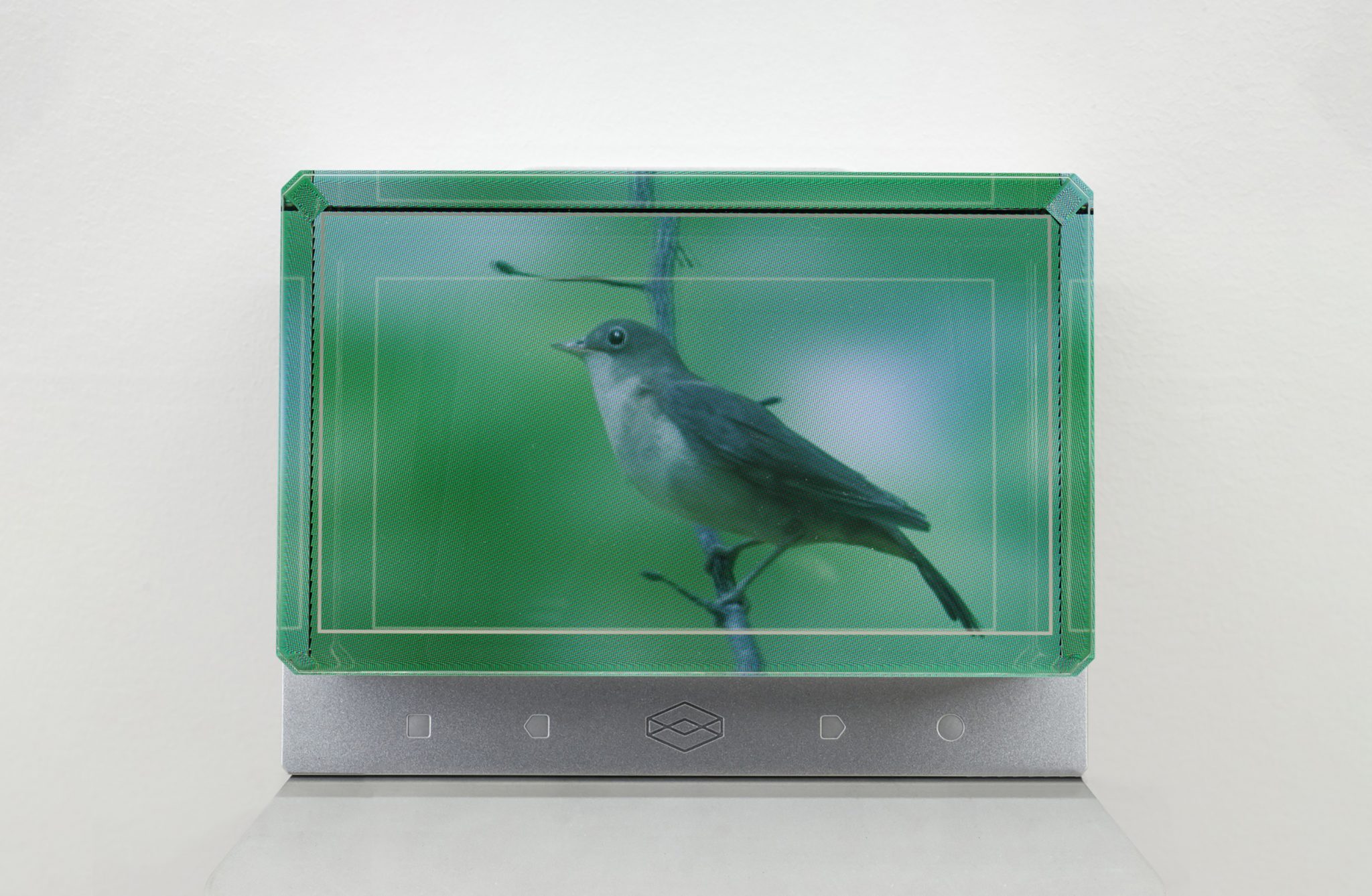The Fifer at Maureen Paley, London shows the work of an artist long interested in geopolitical anchors, their dropping and raising
Birdsong calls out from the gloom, from a dark gallery wedged to one side of Maureen Paley’s L-shaped space. But it’s the brighter gallery that draws first, towards both the oldest and the newest of Deimantas Narkevičius’s works on show here. The former is Europa 54° 54’ – 25° 19’ (1997), a film in which the sixty-year-old Lithuanian artist documents a roadtrip into the countryside around Vilnius: post-Cold War crowds and tower blocks give way to fields, until he reaches a boulder atop a hill, a plaque fixed to the stone declaring it to be the geographic centre of Europe. “It could have been anywhere in Europe,” he dryly states of the hill, its trees, the wind, in a voiceover. Set opposite the film is a wall of enlarged Polaroid prints, Akmenys Po Du (1–17) (2023), a series of isolated boulders in green pastures, described in the gallery text as stones that feature in pagan legends, all located in Lithuania. On one pair of boulders perch wooden shrines.
The shrines shown opposite the plaque, the centre of Europe opposite the sites of fairytales. In bringing these works together, Narkevičius draws a clear line, through juxtaposition, between folkloric traditions, the local and the continental. He is an artist long interested in geopolitical anchors, their dropping and raising; during the 2000s, for example, he made films documenting the removal of Soviet-era statuary in Lithuania. Here, in the juxtaposition of the film’s boulder with those in the Polaroids, the stone with its plaque is rendered a folk artefact without a coherent story. In fact, the centre of Europe is contested, with towns in Belarus and Hungary among others claiming the geographic title, depending on how the borders of the continent are defined. The centre depends on the limit, and these works are notably being shown at a time when the edge of Europe is the least stable it has been in a generation. The Russian invasion of Ukraine, its reverberations for former Soviet states, further destabilises the meaning these points of reference ascribe to the land.
In line with this destabilisation, the birdsong heard from the other gallery, it transpires, isn’t birdsong at all. Rather, it is a flute mimicking the playful, longing melodies of a nightingale that is captured fluttering in and out of a small holographic screen. This is part of an installation, The Fifer (2019), which also encompasses a bronze cast of a flute’s internal cavities, and a pair of photographs. The first of these is an archival interior image of a soldier playing a flute in a dark room, silhouetted by the light of an icy window, the second a digitally produced collage that reconstructs the same scene from an exterior perspective. A fifer, it is worth emphasising, is a military role, a flautist who sounds signals for changes in troop formation. Édouard Manet has an 1866 painting of the same name. In it, a young fifer is depicted against an inscrutable flattened background, his true size and significance hard to place, and this seems an uncoincidental reference for a work that similarly dislocates the signal from the source.
The holographic bird, the bronze cast and the reconstructed photograph each form a tenuous coordination to the flute’s sound. The meaning of the melody, however, whether a call for companionship or an impending invasion, is left uncertain. It is an altogether more slippery set of signifiers than the first room, less specifically geopolitical than mythological in its blurring of human and animal, as if it were a missing passage from Ovid’s Metamorphoses (8 CE). Yet, again, through the military association of the fifer, there is the spectre of destabilising forces. Throughout these works, Narkevičius shows that a reaching for fact, for symbolic solidity, often fails to result in a comforting coherence. It is a potent reminder, at the current historical moment, that points of stability are often a fiction.
The Fifer at Maureen Paley, London, 12 January – 18 February
